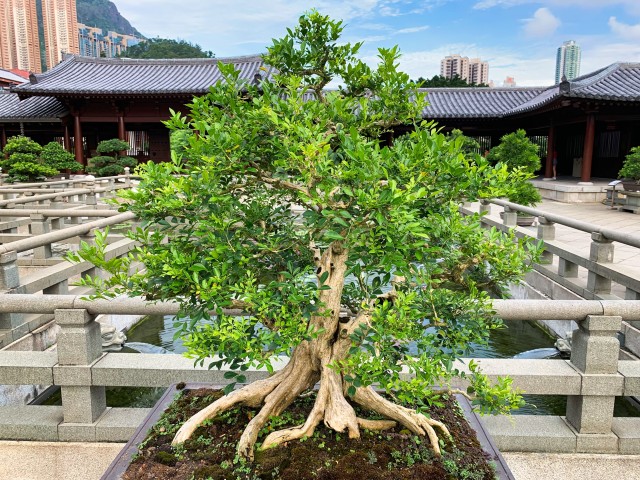Are you ready to learn how to care for your bonsai tree and bring out its natural beauty?
In this article, we will show you the essential techniques and tips to ensure that your bonsai thrives and flourishes.
From selecting the right species to providing proper sunlight and temperature, watering techniques, pruning and shaping, and fertilizing for vibrant growth, we’ve got you covered.
Get ready to enhance the stunning beauty of your bonsai and enjoy the rewards of your nurturing efforts.
Choosing the Right Bonsai Species for Beauty and Longevity
When choosing the right bonsai species, it’s important to consider both its beauty and longevity. To ensure optimal growth, you must pay attention to two key factors: bonsai soil selection and bonsai pot selection.
The right soil is crucial for the health and growth of your bonsai tree. Bonsai soil should have good drainage to prevent root rot and promote healthy root development. Look for a soil mix specifically designed for bonsai, which typically consists of a blend of organic and inorganic components. This will provide the necessary nutrients and moisture retention for your bonsai to thrive.
Equally important is selecting the right bonsai pot. The pot not only serves as a decorative element but also plays a vital role in the overall health of your bonsai. It should have proper drainage holes to prevent waterlogging and allow for airflow. Additionally, the size and shape of the pot should be suitable for the specific bonsai species, allowing room for root growth.
Providing Proper Sunlight and Temperature for Optimal Growth
To ensure optimal growth, make sure you’re providing your bonsai with the right amount of sunlight and maintaining the appropriate temperature.
Optimal positioning is key when it comes to sunlight. Place your bonsai in a location where it can receive at least 6 hours of direct sunlight each day. This will help promote healthy growth and vibrant foliage. However, it’s important to make seasonal adjustments to the amount of sunlight your bonsai receives.
During the hot summer months, provide some shade to prevent sunburn. In winter, when sunlight is limited, consider using artificial grow lights to supplement.
Temperature is another crucial factor. Bonsai trees generally thrive in temperatures between 60-75°F (15-24°C). Avoid exposing your bonsai to extreme temperature fluctuations, as it can cause stress and damage to the tree.
Watering Techniques to Nourish and Hydrate Your Bonsai
Maintaining proper watering techniques is essential for nourishing and hydrating your bonsai. Watering frequency and methods play a crucial role in the overall health and beauty of your miniature tree.
Bonsai trees have unique watering needs, and understanding them is key to their well-being. The frequency of watering depends on various factors such as the size of the pot, type of soil, and the tree’s species. Generally, you should water your bonsai when the soil starts to feel slightly dry to the touch. Avoid overwatering, as it can lead to root rot and other problems.
When watering, use a gentle method like a watering can or a fine mist spray to ensure even distribution of water. By following these watering techniques, you’ll provide the necessary nourishment and hydration that your bonsai needs to thrive.
Pruning and Shaping Tips for Enhancing the Natural Form
By regularly pruning and shaping, you can bring out the unique character and charm of your bonsai. Pruning techniques are essential for maintaining the desired form and promoting healthy growth. When pruning, it is important to remove dead or diseased branches, as well as any unwanted growth that disrupts the tree’s overall shape.
Training methods such as wiring can also be used to guide the branches and create the desired bonsai shape. Careful pruning and shaping can help enhance the natural form of your bonsai, giving it a more refined and artistic appearance.
It is important to remember that pruning should be done with precision and caution, as improper techniques can harm the tree. With regular care and attention, your bonsai can flourish and become a true masterpiece.
Fertilizing and Nutrient Management for Vibrant and Healthy Bonsai
Fertilizing regularly with the right nutrients is crucial for ensuring that your bonsai remains vibrant and healthy. When it comes to fertilizer application, you have two options: organic or synthetic nutrients.
Organic fertilizers are derived from natural sources, such as compost, manure, or bone meal. They release nutrients slowly over time, providing a steady supply of nourishment for your bonsai.
On the other hand, synthetic fertilizers are chemically formulated and provide nutrients in a more concentrated form. They are quickly absorbed by the bonsai, resulting in faster growth.
Both types of fertilizers have their advantages and disadvantages. Organic fertilizers are generally considered safer for the environment and provide a more balanced nutrient profile. However, they may take longer to show results.
Synthetic fertilizers, on the other hand, offer faster and more noticeable growth but can be harsh on the soil and may require more frequent application.
Ultimately, the choice between organic and synthetic nutrients depends on your personal preference and the specific needs of your bonsai.
Conclusion
In conclusion, caring for your bonsai tree is a rewarding and fulfilling experience. By choosing the right species, providing proper sunlight and temperature, watering effectively, pruning and shaping with care, and fertilizing appropriately, you can enhance the natural beauty of your bonsai and ensure its longevity.
Remember to enjoy the process and take the time to appreciate the vibrant and healthy results of your efforts. With these tips, your bonsai tree will thrive and bring joy for years to come.
